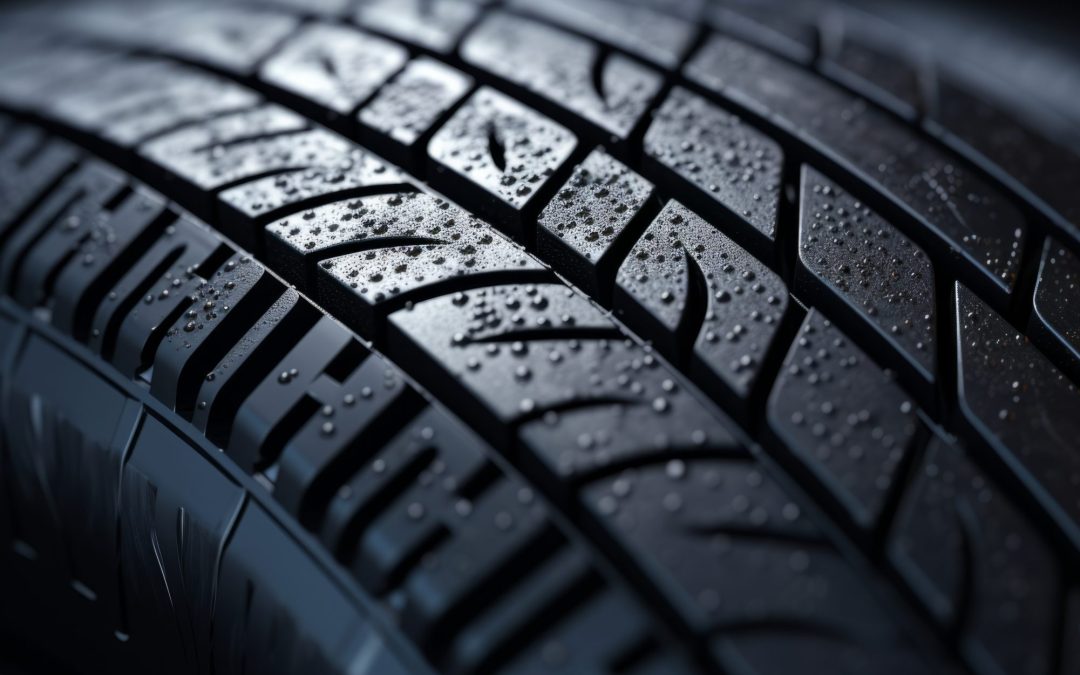As the chill of winter fades and the days grow longer, it’s time to start thinking about how your vehicle will handle the fluctuating weather conditions that spring brings. Tyres, often overlooked, play a crucial role in maintaining control, safety, and comfort as temperatures warm up and the rain becomes more frequent. The key to keeping your car steady on the road? It’s all in the tyre treads.
Let’s explore how different tyre treads are designed to perform in varying weather conditions, and why understanding these patterns is essential as we transition into spring.
What is a Tyre Tread?
A tyre tread refers to the part of the tyre that makes contact with the road. It’s more than just a pattern – every groove, rib, and block serves a specific purpose, designed to provide traction, stability, and safety. As the spring showers make roads slick, choosing the right tread becomes all the more critical.
Tyre treads are made up of several components:
- Ribs: The raised sections of the tread that run along the tyre’s surface.
- Grooves: Deep channels that help disperse water, preventing dangerous aquaplaning.
- Tread Blocks: Segments of rubber that come into direct contact with the road, offering grip.
- Sipes: Small slits within the tread blocks that improve traction on wet and slippery roads.
Together, these elements determine how well your tyres perform as the seasons change.
Types of Tyre Tread Patterns for Changing Weather
Not all treads are created equal, and as the weather begins to warm up, it’s vital to know which tyre tread pattern will provide the best performance in specific conditions. Let’s explore the three primary types of tyre treads and how they perform in spring’s variable weather.
1. Symmetrical Tyre Tread Pattern
The symmetrical tread is one of the most common designs found on standard passenger vehicles. It features continuous ribs or independent tread blocks across the entire tyre face. This pattern provides:
- Smooth driving in dry conditions
- High directional stability
- Low rolling resistance
As temperatures rise and spring showers start, symmetrical tyres perform well for everyday driving. Their even tread design ensures a long lifespan and good fuel efficiency. However, they may not be the best choice as weather conditions become wetter. Their relatively shallow grooves can struggle to disperse water effectively, and they are less effective on slippery, wet roads.
2. Directional Tyre Tread Pattern
Directional treads are designed for more challenging weather conditions, particularly as the roads become wetter due to spring rain. With a V-shaped design, these tyres are engineered to rotate in one direction only, offering:
- Excellent water dispersion to combat aquaplaning
- Better grip on slippery surfaces
- Superior handling at high speeds in wet conditions
As spring rains arrive, directional tyres come into their own. Their deep grooves efficiently channel water away from the tyre’s surface, reducing the risk of losing control on slick roads. If rain or occasional flooding is a concern, these tyres offer added peace of mind. However, directional tyres must be rotated carefully to maintain their performance, as they can only be mounted one way.
3. Asymmetric Tyre Tread Pattern
Asymmetric tyres are a more advanced option, designed to balance different performance needs by combining two tread patterns on a single tyre. The inner part of the tread is designed to disperse water, while the outer portion offers enhanced grip. These tyres provide:
- Superior handling and stability, particularly in corners
- Excellent traction in both wet and dry conditions
- Reduced road noise for a smoother ride
In wet spring weather, asymmetric tyres are an excellent choice, particularly for drivers who need a versatile tyre that can handle varying road conditions. Their dual-purpose design ensures optimal grip and water dispersion, offering excellent performance even as the weather transitions from winter to spring. These tyres are popular for high-performance vehicles, but their benefits can be felt across a range of cars during the spring months.
Choosing the Right Tyres for Spring
As we move into the milder temperatures of spring, ensuring that your tyres are up to the task is crucial for your safety and comfort. Here are some key things to keep in mind:
- Avoid Mixing Tyre Patterns: Using different tread patterns on your vehicle can create uneven performance, potentially compromising safety. Stick to the same pattern on all tyres for a balanced, stable drive.
- Replace in Pairs: When replacing tyres, always do so in pairs (front or rear) to maintain balance. This ensures even wear and maximises grip on wet or slippery roads.
- Summer Tyres: If temperatures consistently remain above 7°C, you might want to switch to summer tyres, which are specifically designed for warmer, drier conditions. Their shallower grooves and harder rubber provide the optimal balance of performance in mild, dry conditions.
Conclusion
As the weather shifts and roads become wetter with spring rains, understanding tyre tread patterns is essential to ensure you’re prepared for the months ahead. From the standard symmetrical treads for dry conditions to directional and asymmetric designs for wet weather, the right tyres will make all the difference in keeping your vehicle safe and stable.
So, as winter turns to spring, take a moment to inspect your tyres. Are they ready for the wetter, warmer roads? Ensuring you have the right tread pattern could be the key to a safer, smoother driving experience in the months ahead.
Need Advice? Contact Segensworth Automobiles
With the warmer months approaching, now is the perfect time to check if your tyres are ready for the change in weather. If you’re unsure, get in touch with Segensworth Automobiles, specialists in tyres, MOT, and servicing. We’re here to ensure your vehicle is safe and roadworthy, no matter the season. Call us today on 01489 662 000 or email sales@segensworth-automobiles.co.uk to book an appointment.
